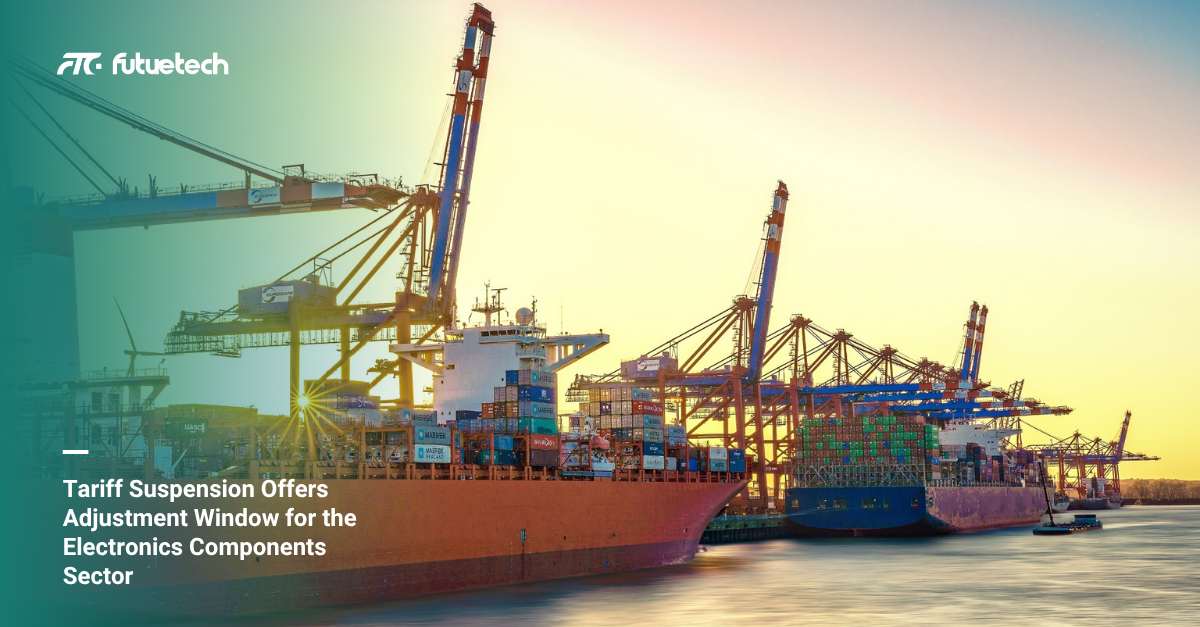On May 12, 2025, China and the United States jointly announced a phased suspension of selected tariffs, aimed at improving trade conditions and promoting supply chain recovery. The plan includes a temporary reduction in certain import duties and a commitment to ongoing communication between the two countries. This development brings welcome relief to the electronics components industry, especially amid global sourcing complexity and evolving market demands.
I. Overview: A Positive Step Toward Trade Stability
The joint statement outlines a 90-day period during which both parties will reduce certain additional import duties while maintaining existing baseline rates. Select procedural measures related to trade compliance will also be paused. This signals a temporary easing of cross-border trade pressures and offers businesses clearer short-term expectations.
II. Short-Term Impact on the Electronics Components Industry
1. Reduced Costs and Margin Recovery
Key components—such as connectors, resistors, capacitors, and PCBs—have faced elevated import costs. With certain duties now paused, procurement costs are expected to fall, improving pricing flexibility for manufacturers and distributors. Market estimates suggest a potential 5%–15% reduction in end-user pricing.
2. Improved Cross-Border Efficiency
Trade-related delays have previously disrupted logistics and customs workflows. The current tariff pause may help streamline supply chain processes, allowing companies to normalize purchasing timelines and reduce the need for excess inventory. This could lead to a 20%–30% improvement in cross-border lead times during the relief period.
3. Stabilized Procurement Confidence
Ongoing uncertainty had led several downstream industries—such as consumer electronics and industrial systems—to delay sourcing decisions. The current measure is expected to encourage renewed purchasing activity and help stabilize order flows through the second quarter.
III. Mid-to-Long-Term Considerations
1. Focus on Value Chain Enhancement
While trade conditions are temporarily more favorable, the need for investment in innovation, localized services, and supply chain agility remains essential. Companies are advised to strengthen their ability to serve global markets through diversified sourcing, advanced logistics, and value-added capabilities.
2. Regional Operations Gaining Momentum
Over the past year, many manufacturers have expanded operations into Southeast Asia and South Asia to better manage risk and access new growth markets. This trend is expected to continue regardless of near-term tariff adjustments, supporting a more distributed and resilient supply network.
3. Temporary Policy Window
The 90-day duration presents a tactical window, not a long-term shift. Businesses are encouraged to remain flexible, monitor further developments, and plan for potential changes in trade conditions. Resilience and adaptability will be key to long-term competitiveness.
IV. Actionable Strategies for Industry Stakeholders
Near Term:
● Optimize sourcing for components benefiting from current duty reductions;
● Reassess pricing strategies to align with improved cost structures;
● Build short-term inventory strategies based on expected demand recovery.
Mid Term:
● Strengthen supply chain partnerships across multiple regions;
● Enhance collaboration with logistics providers for greater operational visibility.
Long Term:
● Invest in technical service platforms and regional support infrastructure;
● Focus on high-potential sectors such as renewable energy, smart mobility, and industrial automation;
● Prioritize business continuity, quality assurance, and compliance across international markets.
V. Conclusion
The temporary suspension of selected tariffs represents a meaningful opportunity for the electronic components sector to improve efficiency and adjust sourcing strategies. As global dynamics remain in flux, businesses that act promptly, invest wisely, and build flexible systems will be best positioned to navigate future challenges and capture new growth.

